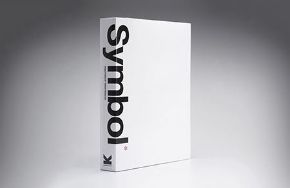Knitted footwear technology is poised to enhance sustainability and walkability alike.
On a recent Monday morning in Portland, Oregon—that walkable mecca routinely voted one of the country's most livable cities, and also home of the North American headquarters for Nike and Adidas—I found myself mesmerized by the feet of passersby. We look to our shoes not just to bring us from place to place but also to telegraph our identity. They're a little like cars in that sense, except we can buy a whole lot more of them, so we can change that identity from one day to the next. But despite the varying looks of shoes, the basics of making them haven't changed much. Until now.
Since pretty much the dawn of the Industrial Age, shoes have been made like this: pieces of leather and other materials cut and sewn together in what's called the "upper," then glued to a hard sole. Despite the machine element, much is still done by hand, with skilled workers needed to put the shoes together; materials are often sourced from different places, with shoes shipped back and forth several times before completion. But two years ago, in the lead-up to the London Olympics, Nike and Adidas released their first knitted running shoes: Flyknit for Nike, Primeknit for Adidas. Each sneaker's upper is machine-woven from a single piece of fused yarn. Less waste, less labor, and a cool new look.
Ever since, the two shoe giants have been waging a Flyknit vs. Primeknit war, with Nike suing Adidas for patent infringement (Nike lost that court battle; much as you can't patent a knitted sweater, it's tough to patent a knitted shoe). In March, Adidas released the first knitted soccer cleat, followed by a knitted cleat-and-sock hybrid; Nike's knitted neon Mercurial and Magista cleats are what you saw on Cristiano Ronaldo and other star players during the World Cup.
Feuding and football aside, knit technology just might transform the entire traditional shoemaking process. Athletic shoes make up 30 percent of all footwear sales, and Nike and Adidas dominate, with $14.5 billion and $9.5 billion in sales, respectively, in 2013.
Widespread use of the knitting technique could boost the industry's efficiency—cutting down on materials, labor, shipping, and time, as the products can be made start-to-finish in one place. In its latest sustainability report, Nike states that a Flyknit running shoe is made with 80 percent less waste than a typical Nike design. Consider that Americans buy an average of seven pairs of shoes a year—that's more than two billion new pairs annually—and you begin to see the difference that a change in manufacturing could make.
Sneakers, of course, aren't just for sports. What a star athlete wears one day informs what a teenager wears on the street the next. In 2012, the fashion crowd fell hard for the knitted-shoe look; every other man at that season's fashion shows was "suddenly rocking orange-and-electric-blue Nike Flyknits with his summer suit," Gilt Groupe's Tyler Thoreson later told the New York Times. Both Nike and Adidas fully intend the new technology to apply to lifestyle footwear, not just athletics, and smaller companies are already adopting the designs.
With more Americans than ever saying they prefer to live in walkable places, footwear has a role to play into the future of U.S. transportation. And for two of the world's biggest shoe companies, lifestyle footwear—what you wear when you're walking around all day, every day—is where the money is. Sustainability is their future.














